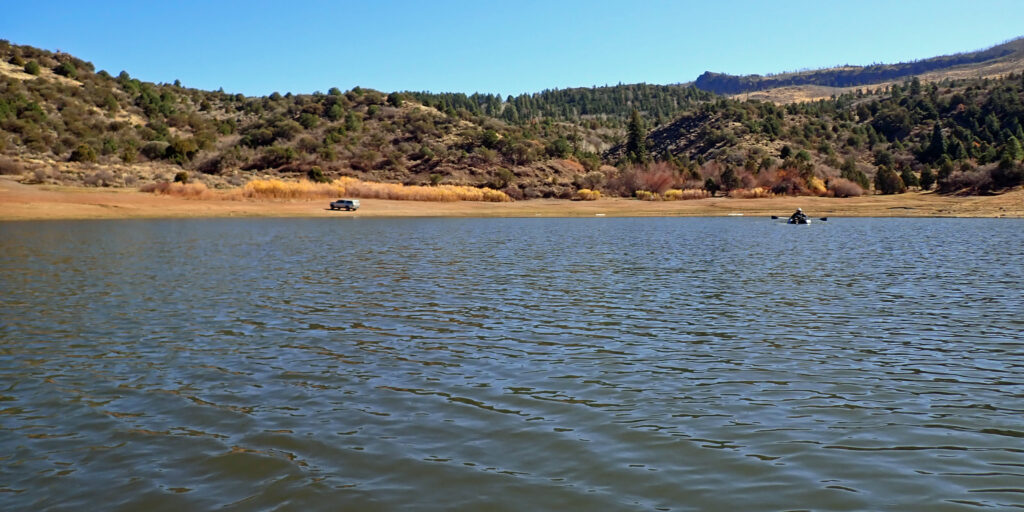
This was my third trip to Red Creek Reservoir (a.k.a. Paragonah Reservoir), and my friend Luis’s first trip. Previous trips to Red Creek were in July 2009 and August 2017, so it has been eight years since I have fished this water. It seems to be one of Utah’s lesser known reservoirs. Perhaps that’s because it is 30 miles east of the town of Paragonah, which is on I-15 about halfway between Las Vegas and Salt Lake City, which is to say that there are more popular waters to fish closer to Las Vegas and Salt Lake. No matter why, weekday trips to Paragonah seem to provide pleasant solitude. On this trip we only witnessed one man, in a Toyota 4Runner, and he seemed to be inspecting the reservoir; he was not fishing.
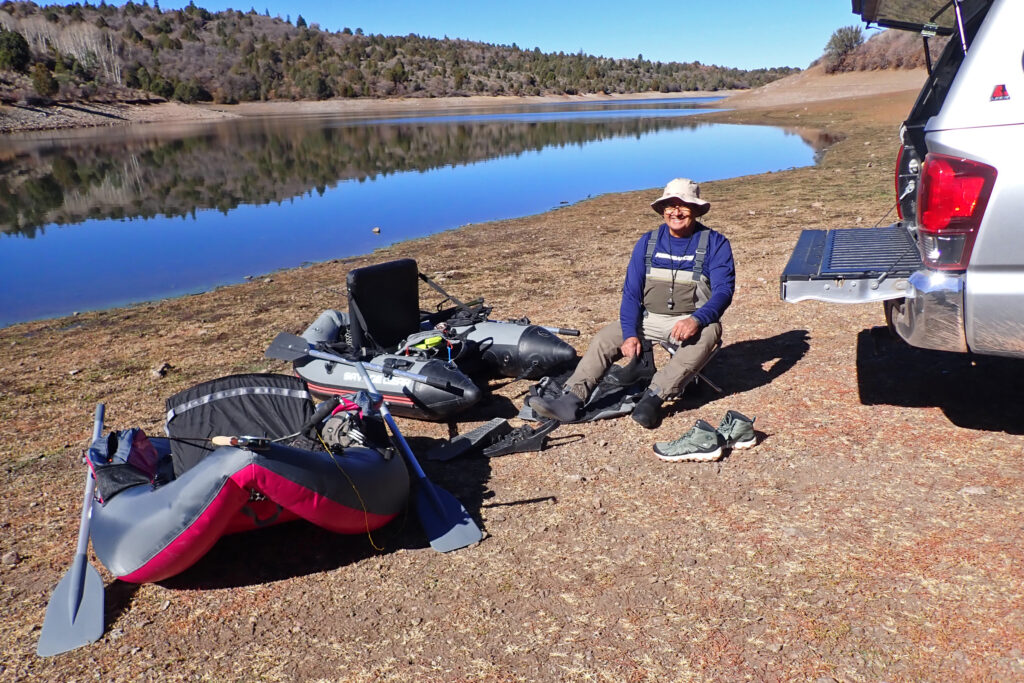
Parowan Valley, in Iron County, UT, includes the towns of Parowan, Paragonah, and Summit. The Paragonah Reservoir is but one source of water that serves the agricultural needs of Parowan Valley. This fall trip found the reservoir considerably below its high–water mark, which is probably normal for this time of the year. Still, watching the 4Runner man walk the shoreline without a fishing rod seemed to indicate he was doing an inspection.
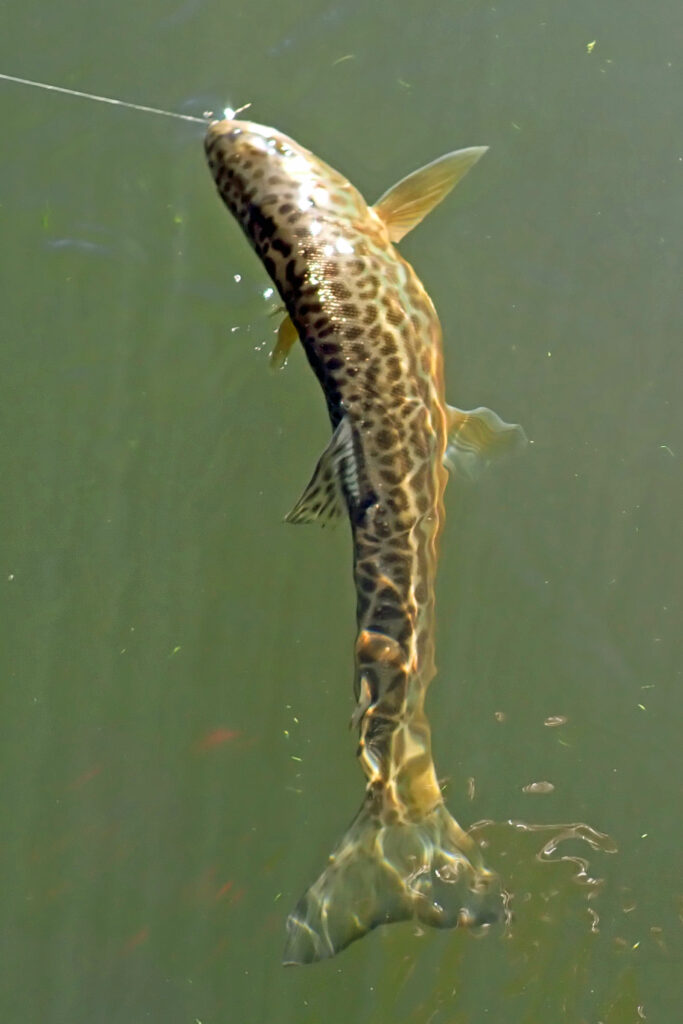
On those previous trips I landed at least one 15 inch trout (a Rainbow and a Tiger), but the fishing was on the slower side. The Red Creek tributary experienced a damaging fire in 2017 that impacted the spawning habitat for the Rainbow trout. To make up for that loss, from which the Utah Department of Wildlife (UDOW) believed the reservoir would eventually recover, they began a “put and take” approach to managing this recreational fishery. “Put and Take” is a crude way of saying UDOW puts them in the water and fishermen take them home for dinner.

See the below photo of the loveliest Brook trout I have ever caught (this from Henderson Springs).
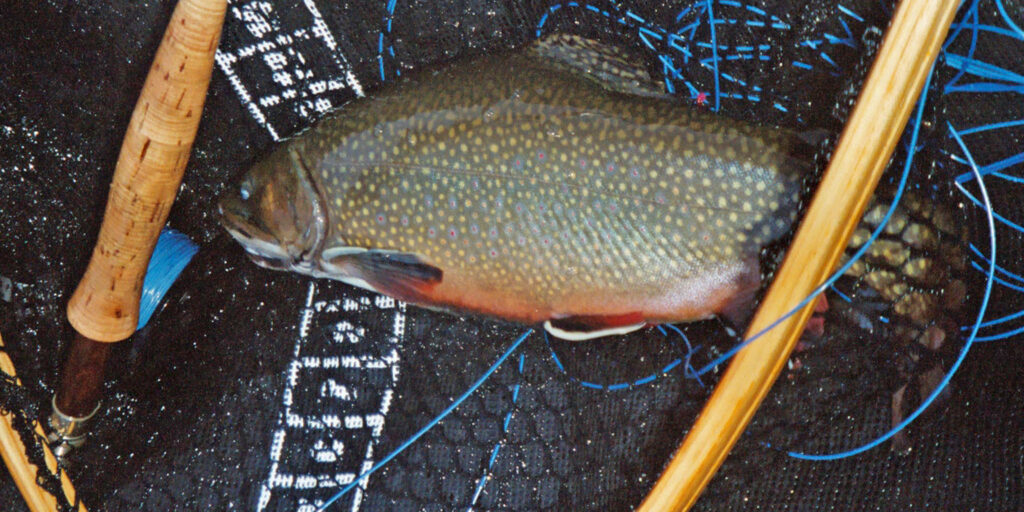
There are a variety of trout available to catch in Red Creek Reservoir. The UDOW reports there are four “trout” in the reservoir: Rainbow, Bonneville cutthroat, Splake, and Tiger. I believe we caught all four today, but I admit that the Rainbows and Cutthroats were difficult to tell apart. My personal experience is that while both sport crimson splashes on their gill covers and sides, the Cutthroats usually display their namesake crimson to orange slashes underneath their jaws, and their dark spotting pattern is usually sparse at their head and progressively more dense towards their tail.
I apologize for torturing my readers with another lesson on trout taxonomy, but my intention was to give you some perspective about the confusion this fishery creates. Rather than stocking the usual Rainbow trout (scientific name: Oncorhynchus mykiss) and Brown trout (scientific name: Salmo trutta), UDOW began stocking exotic trout like Bonneville cutthroat (scientific name: Oncorhynchus clarkii utah) and hybrid trout like Splake (hybrid Salvelinus namaycush, i.e., Lake trout, × Salvelinus fontinalis, i.e., Brook trout) and Tiger (hybrid Salmo trutta, i.e., Brown trout, × Salvelinus fontinalis, i.e., Brook trout). The hatchery hybrid process for Splake and Tiger pretty much renders them sterile, so they don’t compete with the Rainbows for spawning habitat. To add more confusion to this science soup, Lake and Brook trout are classified as “charr” (in the genus Salvelinus), which sport light speckles on darker background whereas “trout” (in the genera Oncorhynchus and Salmo) which usually carry dark spots on lighter coloring. Furthermore, the biology that puts Rainbows and Cutthroats in the same taxonomic family (Salmonidae / Salmoninae / Oncorhynchini / Oncorhynchus) allows them to naturally cross breed creating another natural hybrid affectionately called a Cutt-Bow trout. I suspect there are some Cutt-Bows somewhere in that 70 acre reservoir.


I prefer fishing for natural species of fish, but I understand that the science of fish hatcheries meets the needs of the anglers who pay license fees. Still, most fishermen I know would rather catch and release a couple natives in full spawning color than keep a full creel of pale fish raised on hatchery pellets.

I am sad to report that I struggled a little on this trip. Prior to this trip, I noticed recovery time from my gym workout was taking longer, especially for my right leg, which has never completely recovered from an abdominal thrombosis (see “A Pause in the Life”). Unrelated to my leg damage, my hands have been suffering from inflammation caused by uric acid. This prevents me from grasping my fly rod handle tight enough to properly accelerate the rod from forecast to backcast, and vice versa, so much so that I’m considering wrapping tennis racket grip tape to add some additional girth to the fly rod handle. I also struggle with knot tying and other tasks requiring delicate manipulation with my fingers.
While I could fixate on my infirmities, I choose not to. Our Lord and Savior teaches us to carry our own cross as He carried his (Luke 9:23). Whatever we do, we should do it to please the Lord, not ourselves or others (Colossians 3:23-24). He says whatever trials we endure can be tests of our faith, (James 1:2-3), tests that produce perseverance. Most importantly, the Lord promises He will deliver us from our troubles when we are in heaven with him (Psalm 34:19). So, instead of feeling defeated when I struggled to remove my waders, I was pleased to accept Luis’s offer to help pull my stocking foot waders off my uncooperative right foot.
I chose to share these truths because I have readers out there, like John, Ron and others, who are struggling through their senior years just like me. We all have some burden to carry, and I try to carry mine with joy and happiness, as I believe that my Lord and Savior would want of me.
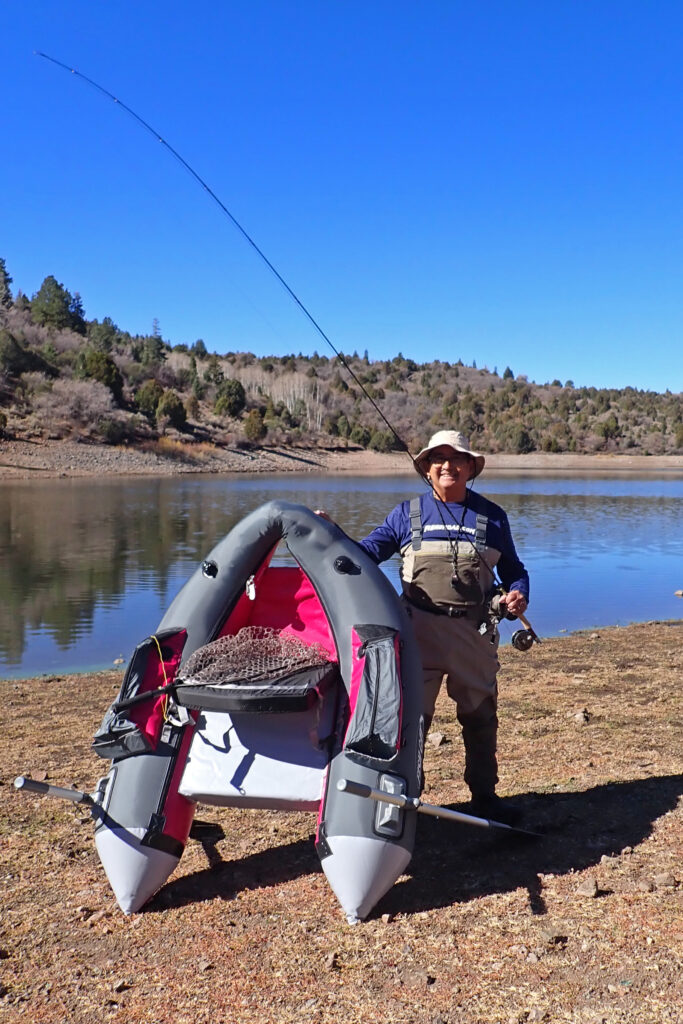

Brook-Lake ‘Splake’ could also be named BROOKLAKE (pronounced BRŪ-KLĂKĒ…)🙄
Hey Jeannie, you are a budding ichthyologist! LOL…
Glad to read a new Fisherdad travel log Mark!
I agree the colors of your fish weren’t as vibrant as some in past adventures, but it looks like you & Luis had a fine time.
Jim
Thank you Jim! Despite my mild complaint, we all know the natural blessings the Lord has bestowed upon us are a remarkable gift, be we stewards, observers, or active participants. Always appreciate your comments.
Hi Mark!
As usual, I fully enjoyed your blog and it always makes me miss trout and salmon fishing with my dad so many years ago. Take good care and keep writing!
Judy
Thank you Judy. Someday my children and grandchildren will remember me as you do your dad, and my hope is that they will still have this blog to live my adventures and share my faith with me.
Thanks again for being a faithful reader!
– Mark
Hello. I’m probably the “Ron” you mentioned at the end of the article. Not fishing anymore due to balance, neuropothy and macular degeneration. As well as turning 90 on June 2026. But, like you, so many awesome memories. See you at Adam’s McGill in my dreams. Keep fishing . They make larger grips for rods.
Yes sir, I think of you often. I had hoped we could fish together again some day, but like you the memories of times past give me great pleasure as well. May the Lord bless you and keep you, my friend.
Hey Mark, good to hear from you again on your fishing blog. Thank you for reminding all of us of all the simple pleasures that our Lord and Savior, Jesus wants us to have and to focus on him daily. Yes, we are all getting older, but each day that he gives us by his grace is truly a win, especially if you use your time wisely and fish a beautiful area like Paragonah Reservoir. May Jesus always bless you. Fred
Fred, thank you for lifting me up today. We clearly share our love of the Lord and his remarkable creation. I pray He continues to “bless you and keep you; the Lord make his face shine on you and be gracious to you; the Lord turn his face toward you and give you peace.”
Numbers 6:24-26 NIV
– Mark
It’s really good to see you back in the wild fishing again and sharing your fishing knowledge and photos! I am sorry to read about your struggles but am comforted to hear that you are able to overcome through the help of Jesus!
Keep fishing and enjoying your amazing adventures! Hi and hugs to Denise!
I appreciate your comments Karen. Thank you! I know I can be a bore about fishing (it is after all a fly fishing blog), but I know that you also believe experiencing His amazing creation of our natural world reveals to us His attributes, especially his creative powers, his omnipotence, his omnipresence, and his love for us. I know that he wants us to enjoy it, as scripture says in Romans 1:20, Psalm 104:24-25, and many others.
I will pass on your greetings to Denise, and I pray many more blessings your way.
-Mark